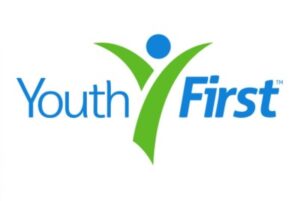 Editor’s note: We are reprinting this column, which first appeared in the April 10 issue of The Message. Some of the information in this column was written to apply to at-home schooling, which resulted from the COVID-19 outbreak.
Editor’s note: We are reprinting this column, which first appeared in the April 10 issue of The Message. Some of the information in this column was written to apply to at-home schooling, which resulted from the COVID-19 outbreak.
Many years ago a friend gave me a beautifully framed quote that reads, “Serenity is not freedom from the storm, but peace within the storm.”
Over the past few months, we have all found ourselves within the storm of the COVID-19 pandemic. This is especially true for children and parents of school-aged children.
Our children have had to switch gears from going to school to being at home 24 hours a day, 7 days per week. Parents have had to shift gears also, possibly working from home and adding the title of “teacher” to their parental resume.
This shift creates additional work and stress for both parents and children. However, children often do not know how to put words to their feelings. Because children may not have words such as worry, fear, sadness, anxiety, anger and even depression to describe their stressful feelings, they act out.
Acting out may look like excessive clinginess, tearfulness, emotional meltdowns, aggressiveness or regression in other behaviors. Children may also suffer from more physical complaints such as headaches, stomach aches, a racing heart, dizziness, interruption in sleep patterns, etc.
As a parent, grandparent or caregiver, you have the challenge of helping your child learn to express and deal with their complicated feelings in a healthy, appropriate manner. This is no easy task, as you may be experiencing many of the same feelings yourself. However, you have to remember that you are your child's “safe place” in what may seem like an unsafe world at present.
Children are usually at their best when they feel safe, connected to others and have structure and organization in their lives; in other words, a sense of predictability and normalcy. You can be this fortress of safety and normalcy by trying some of the following strategies.
Learn/teach how to properly practice deep, relaxing breathing. You can do this in innovative, fun ways such as lying on the floor with your child while each of you puts a stuffed animal on your stomach. As you breathe in through your nose for a count of 3 or 4 and out through your mouth for a count of 3 or 4, you should see the animal sink and rise on your belly. This means you are doing deep, relaxing diaphragm breathing.
Deep breathing activates your parasympathetic nervous system. In simple language, it helps decrease sensations of fear or distress and increases a sense of calm. This would be an excellent way to start your at-home days along with a discussion of what the day's routine is going to be, which again conveys a sense of safety to children.
Take a break every 20-30 minutes. During these breaks, dance, sing, hum and encourage movement, as these types of activities help to naturally promote a sense of calmness and/or positive mood.
If you notice your child is starting to become frustrated or upset during an assignment, try to interrupt the frustration before it becomes a full-blown meltdown. Suggest they splash cold water on their face, put a cool rag to the back of their neck, or give them a piece of sugar-free candy or gum to chew.
Even if you only have 5-10 minutes to do this, try to really listen, empathize if needed, answer questions truthfully with age-appropriate facts … and try not to be judgmental. Just like you, children are trying to understand and come to terms with the current chaos and unknown of the “new normal” - in what is not their normal world.
Please check out the Youth First website at youthfirstinc.org/selmaterial for additional suggestions, activities and exercises to help strengthen families and youth through this stressful time in our lives.
Mary Ruth Branstetter, LCSW, LCAC, RP, is the Youth First Social Worker at St. Joseph School in Vanderburgh County.
